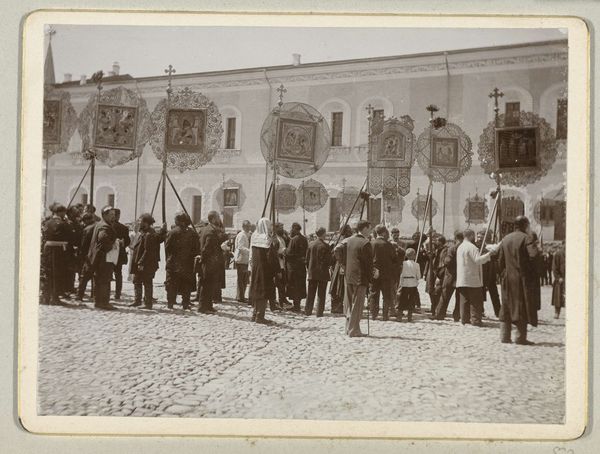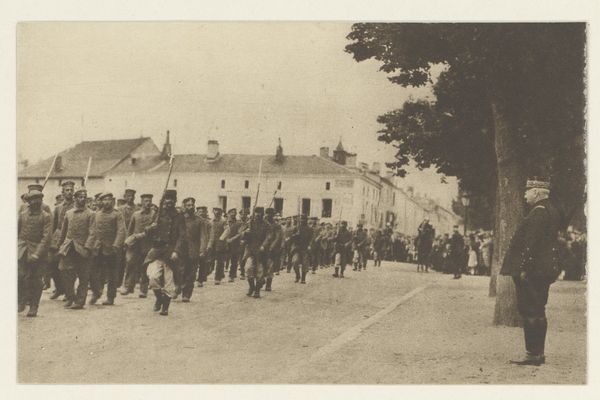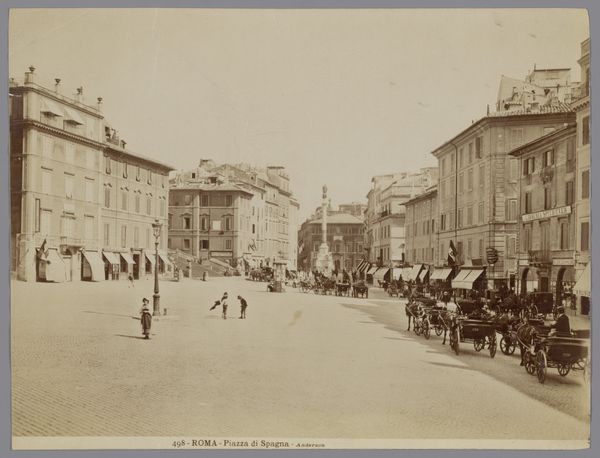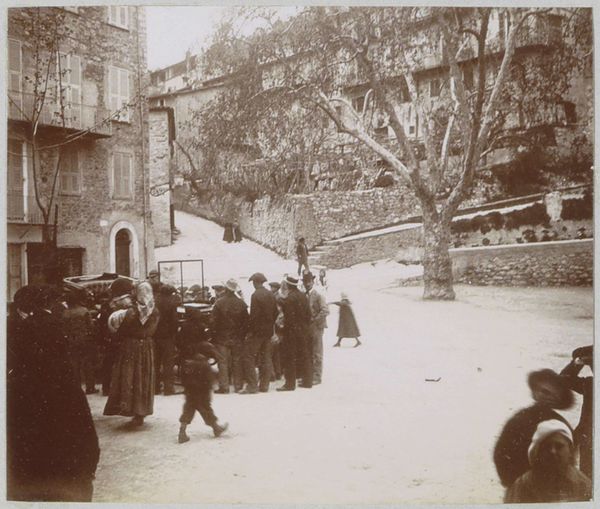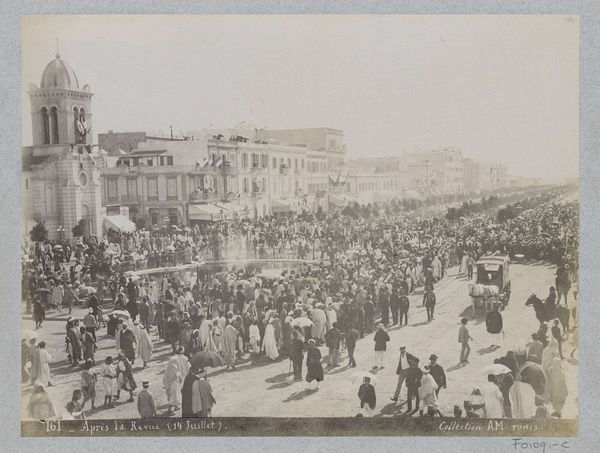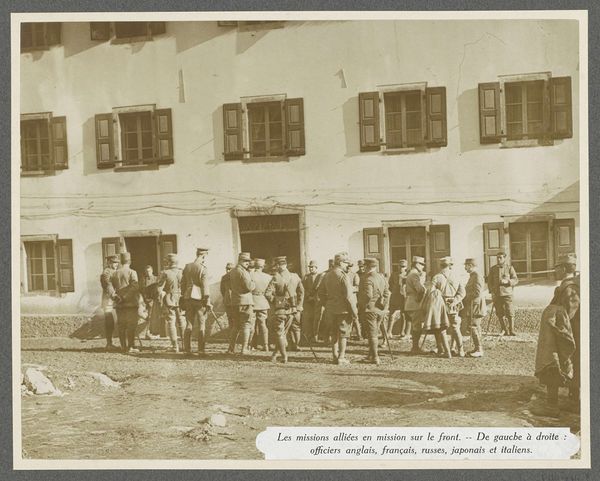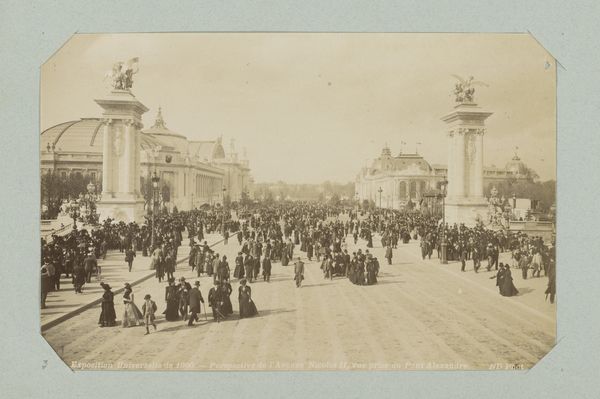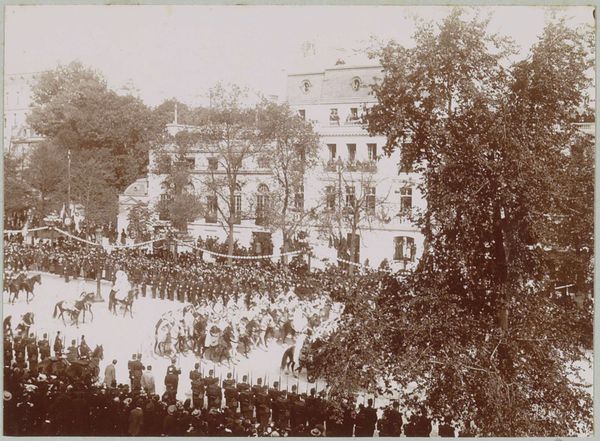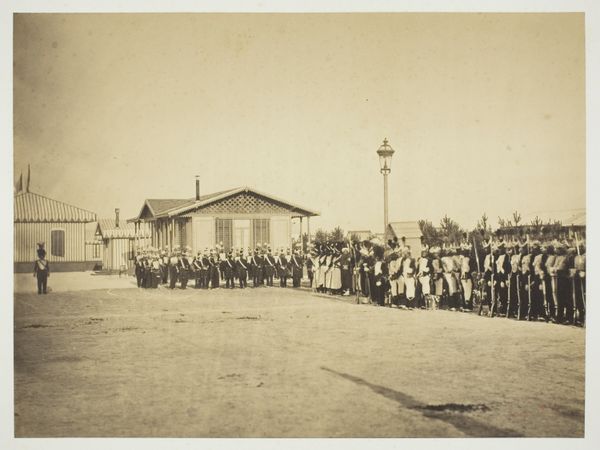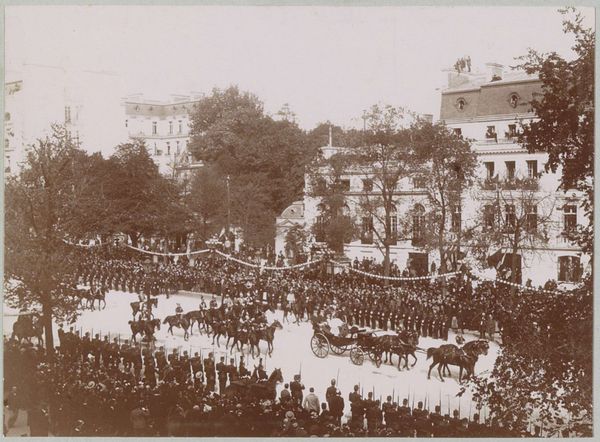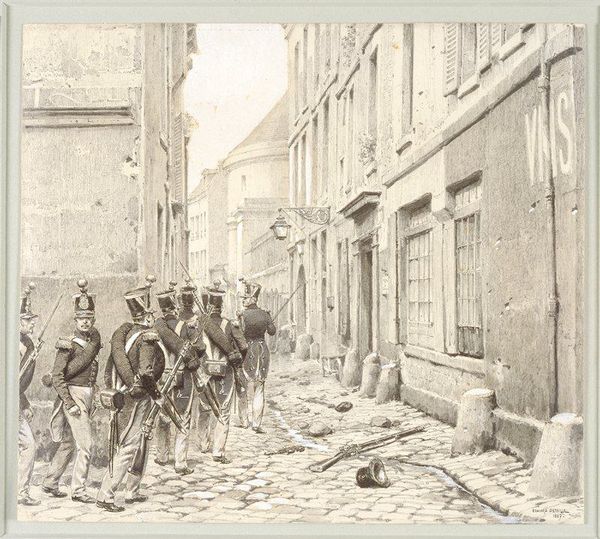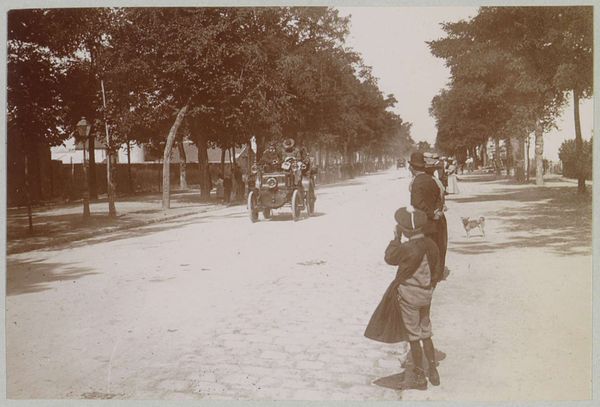
photography, gelatin-silver-print
#
landscape
#
photography
#
historical photography
#
gelatin-silver-print
#
19th century
#
russian-avant-garde
#
genre-painting
#
realism
Dimensions: height 82 mm, width 120 mm, height 259 mm, width 365 mm
Copyright: Rijks Museum: Open Domain
Editor: Here we have "Procession with Religious Images in the Kremlin", a gelatin silver print from 1898 by Henry Pauw van Wieldrecht, currently held in the Rijksmuseum. It’s a very busy image, a procession moving through a stark, open square. What stands out to you? Curator: The most prominent aspects are the images themselves, hoisted high, carrying meaning across generations. Even stripped down to monochrome, we see a palimpsest of cultural memory. Editor: Palimpsest? Curator: Layers upon layers, like an ancient manuscript where previous writings are still faintly visible beneath the current text. Consider these religious images – what emotions do they evoke? Do they instill a sense of comfort, power, or perhaps even fear in the modern viewer? Editor: I suppose it depends on one’s background and beliefs. To me, they represent a powerful, yet somewhat distant, history. The faces are hard to read. Curator: Precisely. And what about the location? The Kremlin itself is heavily laden with symbolism. Power, religion, state… they’re all interwoven here. How do you think the photographer uses the space to add meaning? Editor: It’s interesting that the figures don’t seem dwarfed, but still small under those long buildings and high images, which could suggest the relative insignificance of individuals in the face of institutional power. Curator: Yes! Think of it as an anthropologist would; we see encoded societal values visibly performed and permanently etched in print through photographic realism. I wonder, what does a contemporary piece of artwork, with all its modern, diverse influences, have to say in contrast to this image? Editor: That's a great question! This makes me want to consider how photographic realism affects my reception, knowing it documents a true moment. Curator: Exactly, the images remain evocative, hinting at Russia’s complex cultural and psychological landscape during the late 19th century, giving enduring meanings across space and time.
Comments
No comments
Be the first to comment and join the conversation on the ultimate creative platform.
